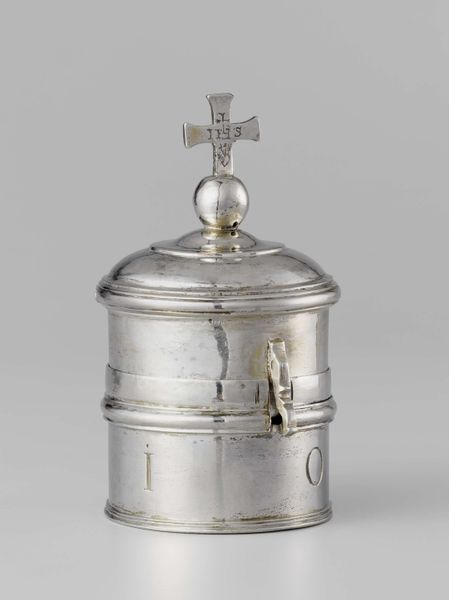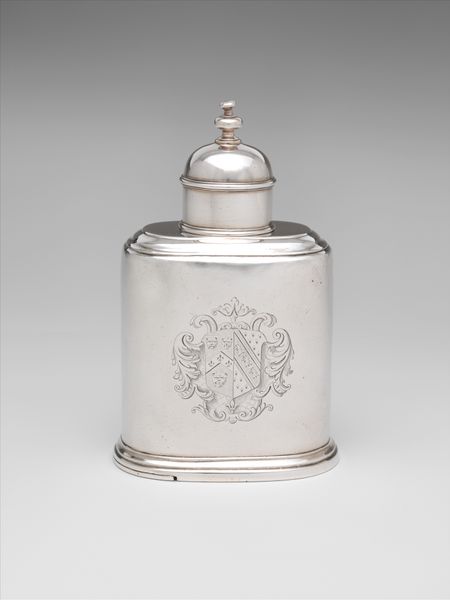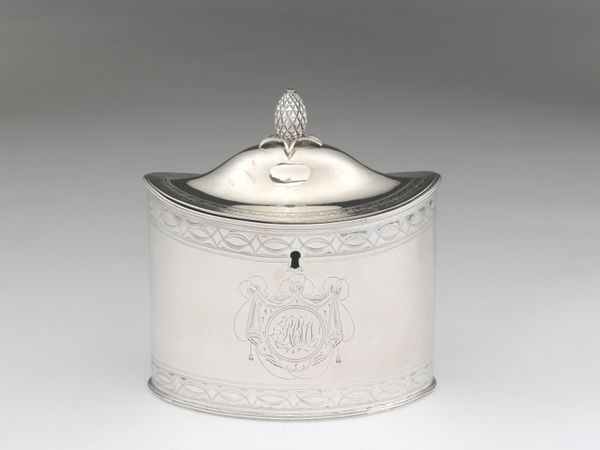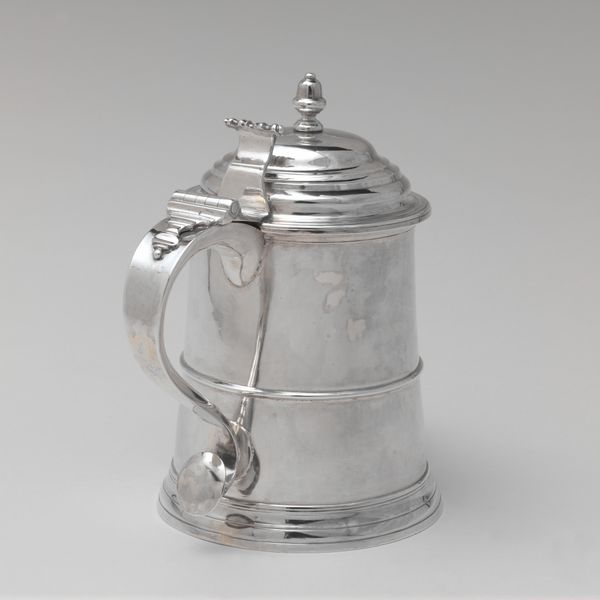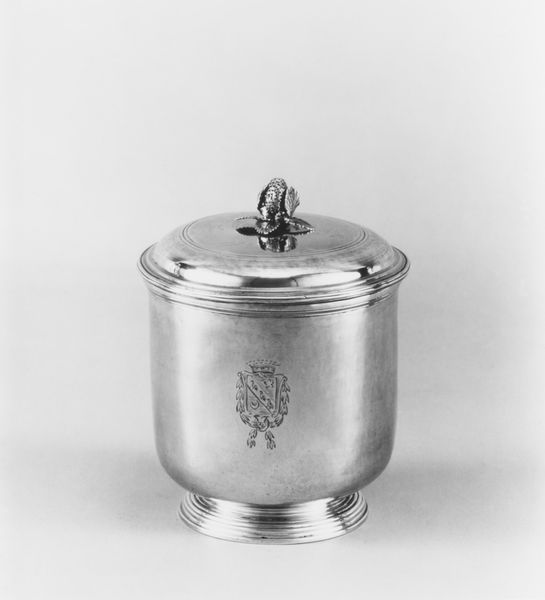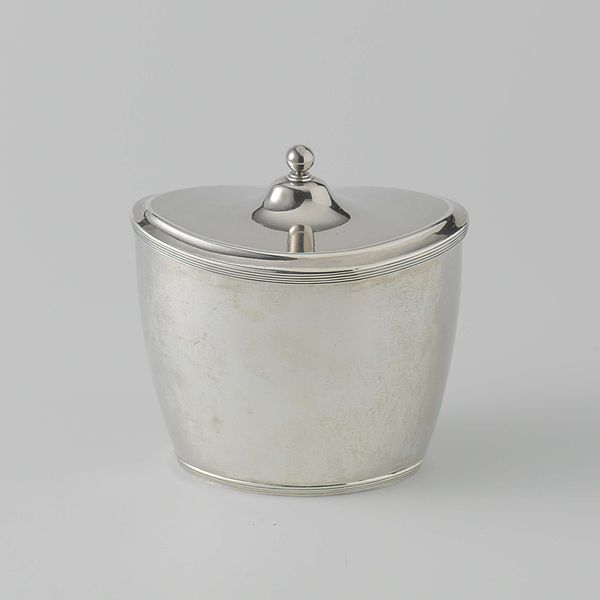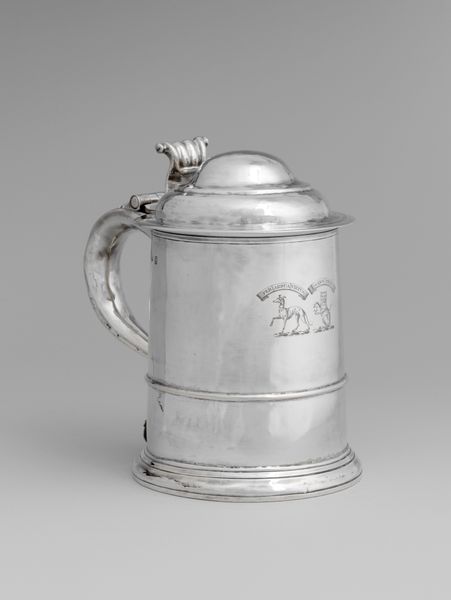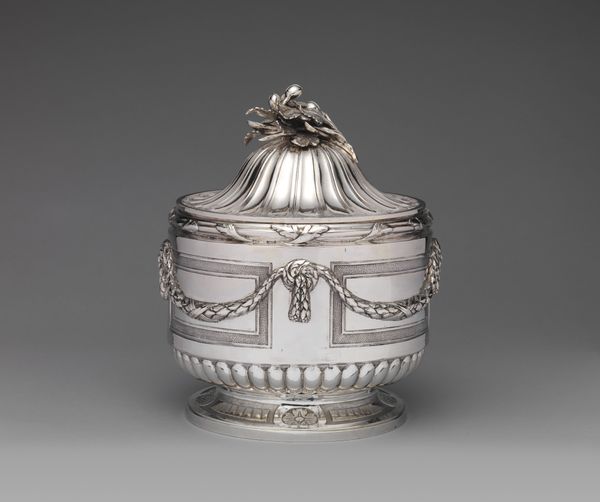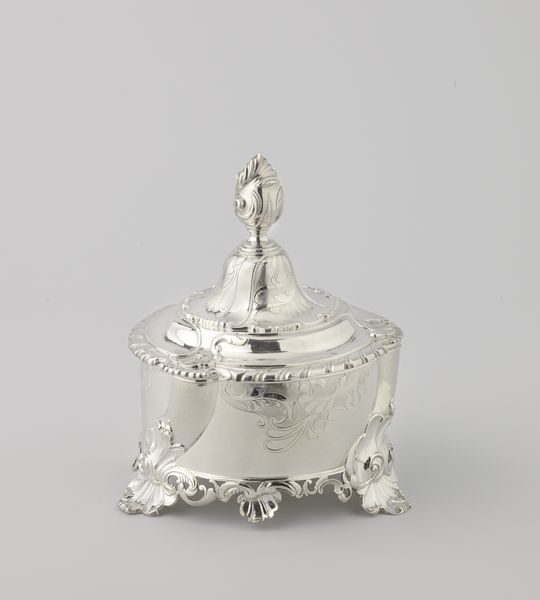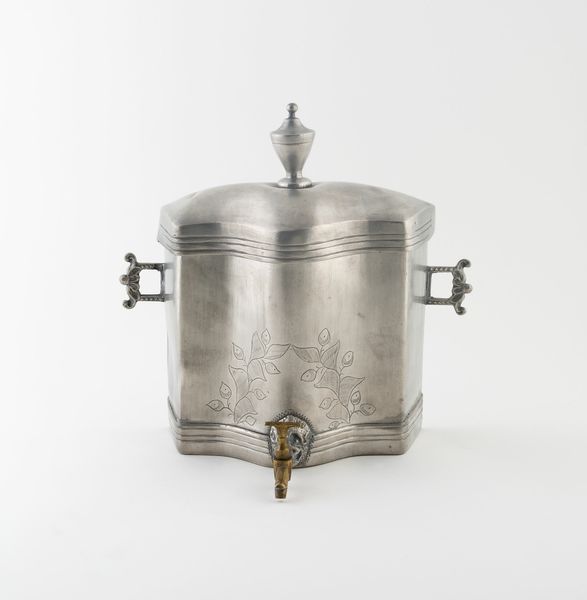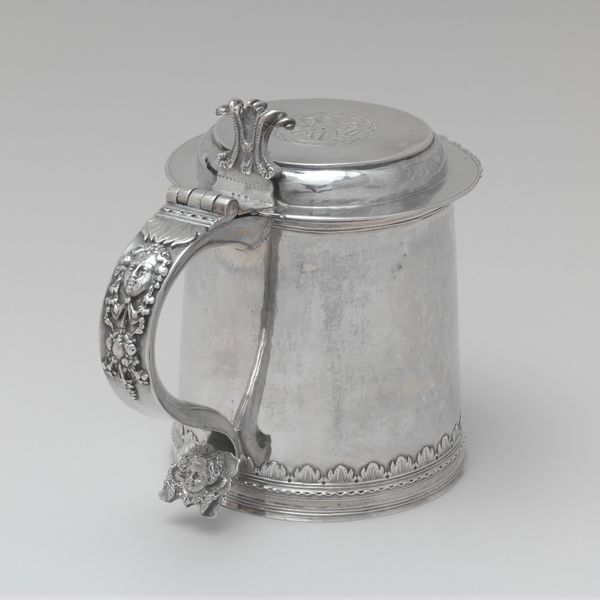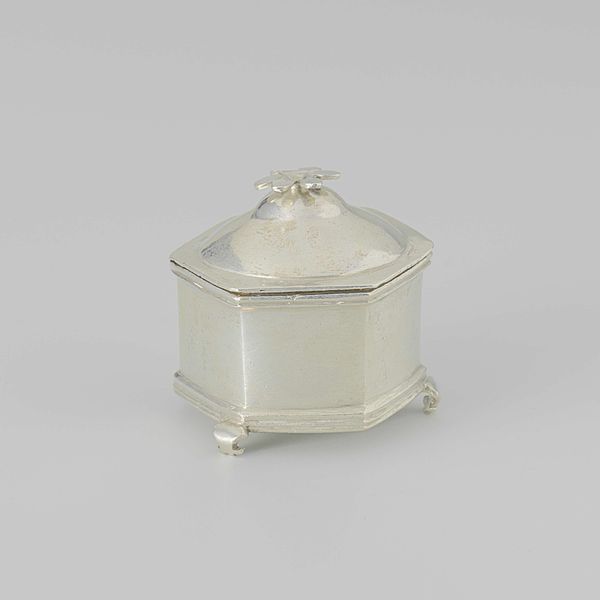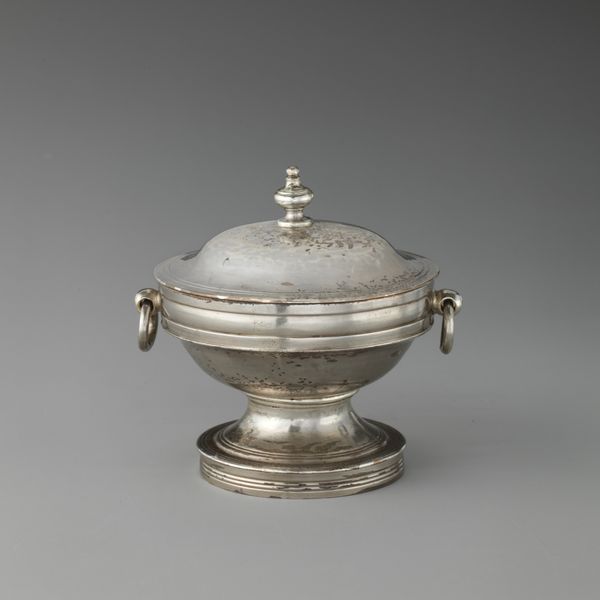
silver, metal
#
studio photography
#
product photograph merchandise
#
advertising product shot
#
product studio photography
#
silver
#
metal
#
product photography advertising
#
product fashion photography
#
lifestyle product photography
#
product design photgrpaphy
#
metallic object render
#
united-states
#
product photography
#
decorative-art
Dimensions: Overall: 6 3/8 x 5 15/16 x 4 5/8 in. (16.2 x 15.1 x 11.7 cm); 17 oz. 3 dwt. (532.9 g) Base: 5 5/8 x 4 1/4 in. (14.3 x 10.8 cm)
Copyright: Public Domain
Editor: Here we have Christian Wiltberger’s silver Tea Caddy, dating roughly from 1797 to 1820. The gleam of the silver gives it a certain formality, almost austerity. It makes me think about the rituals surrounding tea in the late 18th and early 19th centuries. What kind of social context was a piece like this embedded in? Curator: Precisely. Consider the rise of tea consumption in America following independence. Breaking away from British goods, tea became not just a beverage, but a statement of American identity, a conscious effort of socio-economic self-definition through material culture. A tea caddy in sterling silver demonstrates a growing wealthy merchant class seeking markers of status, like this bespoke monogram. Editor: So it’s less about the tea itself and more about who owns it and what they represent? Curator: Partially, yes. This caddy becomes an emblem of social aspiration in post-revolutionary America. Silver production itself tells a story: it’s a skilled craft, one requiring specific raw materials and workshops and distribution networks, and what could be referred to as power networks. What does the form of the caddy, the smooth undecorated surface, tell us, compared say to rococo caddies? Editor: It’s definitely more restrained. I guess it aligns with emerging Republican ideals of simplicity, as a move away from perceived European decadence? Curator: Indeed. Its classical lines speak to this newly founded nation's aspiration of a rational order rooted in enlightened principles, all expressed through design. But don’t forget, while pushing “republican simplicity”, silver was still a display of wealth. Do you find this complicated? Editor: Absolutely, it’s that tension between ideals and reality that makes it fascinating. I hadn’t really considered how something as simple as a tea caddy could embody such complex social and political meanings. Thanks for helping me understand this beyond its face value! Curator: My pleasure! This simple piece illustrates how the consumption habits of a certain demographic become a form of symbolic communication about emerging American values.
Comments
No comments
Be the first to comment and join the conversation on the ultimate creative platform.
